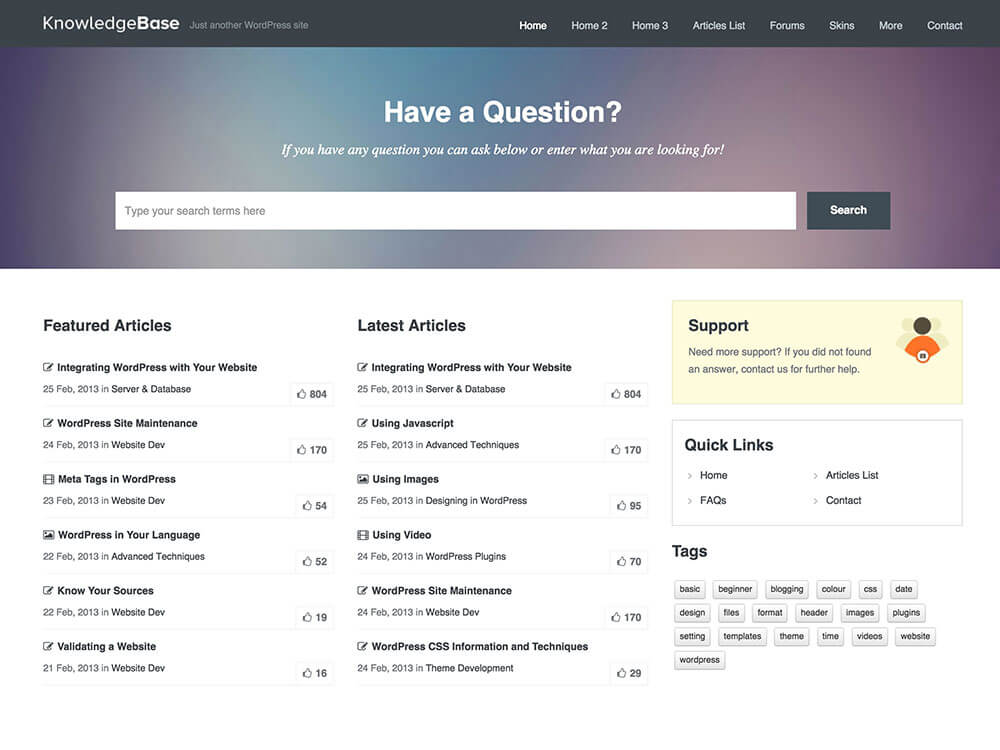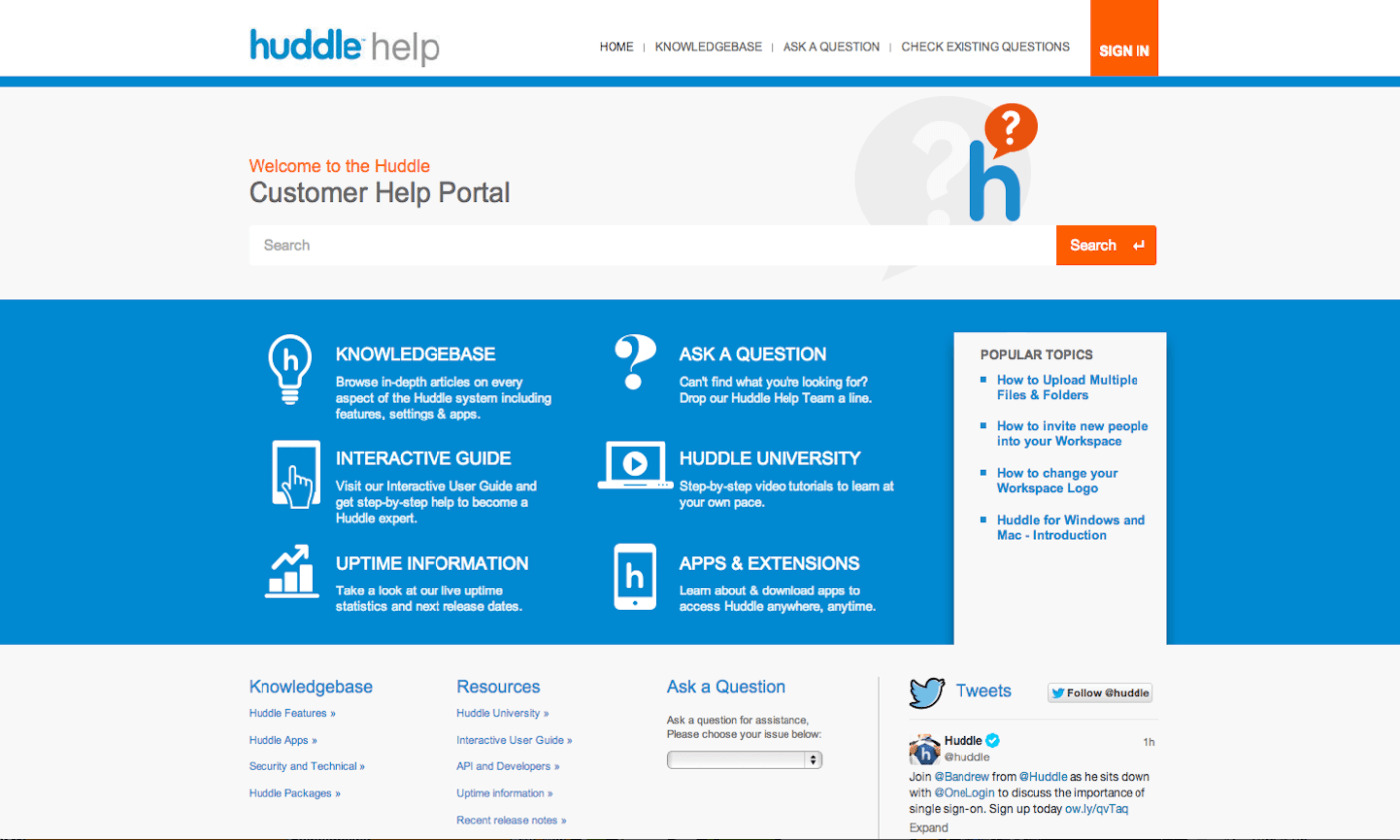Knowledge base software can make a huge difference in how your customers perceive your brand, especially when it comes to first impressions. Before making a purchase, a lot of customers look for trust signals to show that their money won’t be wasted. Often at the front of their mind is knowing there will be support if and when they have a problem.
For me, good service is efficient and discreet; it’s that critical balance. As soon as the client sits down, the communication flow has to start. Customers need to feel… that there’s a system in place.Daniel Boulud
Source
Wordstream defines trust signals as elements that are often displayed on websites and at physical point-of-sale in brick-and-mortar businesses to help customers feel more secure in their decision to patronize a specific business or buy a specific product or service.
Key trust signals your customers watch for in the sales funnel include:
- Contact information on site
- Physical address for a business
- Guarantees on the product or service
- Affiliation with known brands
- Security certificates
- Established support channels.
The Purpose of Knowledge Base Software
That last bullet point is key. Your customers want to know you’re there for them, even if you can’t physically be there to help. A lot of customers will try to troubleshoot first or may look to your site for answers. A knowledge base provides that self-help support and research that helps prospective customers make a decision about buying from you.
Of course, they legitimately contain Information to help your current customers if the need arises.

Benefits of Knowledge Base Software
According to Oxford Dictionary, a knowledge base is a collection of information or data that is available to draw on. Implementing this through software gives you a place to dole out information, but also a place where people can connect with one another to exchange the information they need for a specific task.
Knowledge base software comes with a number of benefits to your organization, including:
Clear Insight – you can better understand how your customers respond, think, and act based on how they access the content within your knowledge base. By reviewing the content most accessed, you’ll have data on the topics that matter most to your customers.
Simple Changes – Just about any knowledge base software can have its core database updated without necessarily impacting the individual articles that have been published. There’s also basic content management, allowing you to revert to older articles if changes or knowledge base updates need to be reversed or eliminated.
Unlimited Content – Knowledge base software works like a contained content management system, so there’s no limit to how much content you can host and share with your audience. Thankfully, it’s easy to divide content into segments based on customer’s needs, so you never have to worry about overwhelming customers or it being difficult to find certain content topics.
Cost Reduction – You’ll actually reduce overhead costs by providing self-help and support content in your knowledge base software. Customers will search there for answers before submitting tickets or engaging your service team. This can reduce the load time for your staff.
Your team can also use the knowledge base to quickly supply answers and documents to customers, making for a faster turnaround on service calls.
Internal Benefits – Your knowledge base software can be used for internal support as well, providing additional training and tools for onboarding. It also simplifies processes around sharing and collaborating.
Essential Tips for Leveraging Knowledge Base Software

The knowledge you and your team has, that you share with your customers, is your company’s competitive edge in the marketplace. That knowledge can be used to identify and address critical pain points your customers have, as well as help your teams expand their skill.
Here are some essential tips for getting the most out of your knowledge base and creating an awesome customer experience.
Use Your Customer’s Words
When customers contact you via email or through a ticket system, they’re describing the issue the best way they know how. If you review those tickets you’ll likely see patterns in how people ask for help and report issues.
Also, check the search history on your site. Use what you find to write your knowledge base articles. This way your content will be optimized for the things your customers are searching for.
Target Customer Needs First
It’ll likely take a while to populate your knowledge base with all the content your customers need, so go at it with some level of strategy. Tackle the most-asked questions first that pertain to the biggest pain points of your audience.
By targeting the big questions, you’ll have an immediate impact on the number of support inquiries and the time it takes to answer them. Start by creating a master list of the most common issues, write tutorials for those issues, and create a content strategy to get those support answers rolled out quickly.
Hire a Writer
Unless you have experience with technical writing or any kind of writing for an audience, it’s probably best to make the investment in hiring a writer for your knowledge base software. You don’t want the content to be as dry as a textbook, it needs to be engaging while still hitting critical points.
If you’re fine with tackling the content on your own, then follow this simple method to structure your content consistently:
- Identify the problem and describe the issue the customer is having
- Describe the step-by-step process to resolving the issue
- Describe the resolution so the customer knows what success should look like when everything is back to normal.
- Include relevant images and videos, or link to other articles and multimedia content that supports your knowledge base articles.
Make Next Steps Obvious
Since software and hardware can be temperamental, your support fixes aren’t going to work for all of your customers. At the end of your content, include bold calls to action that will let the customer submit a ticket to your support team if the article wasn’t helpful. Remember, the purpose here is to support and delight your customers – give them a streamlined experience.
Make it Part of Your Content Strategy
A documented content marketing strategy includes regular content audits to make sure content is fresh, relevant, and up to date. The same kind of audit should be done at least once per year so that your support articles always match up with the latest versions of your platform, software, hardware, etc. During this audit, reevaluate your analytics and customer support requests so you can address any gaps in your content strategy.
Take Other Learning Methods into Account
It will take some additional time and cost, but your knowledge base software should be loaded up with content in a number of formats. Most people do just fine with reading and following instructions, but there’s a portion of your audience that learns best through other means. Put video tutorials on sites like YouTube and link them back to your knowledge base, include videos on the site, and put step by step image guides in place using screenshots. Not only does this help with optimization, it ensures that no matter how your audience is comfortable learning, they’ll have a good experience using your support services.

